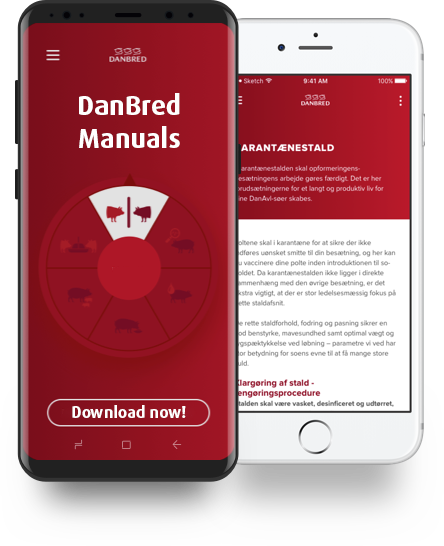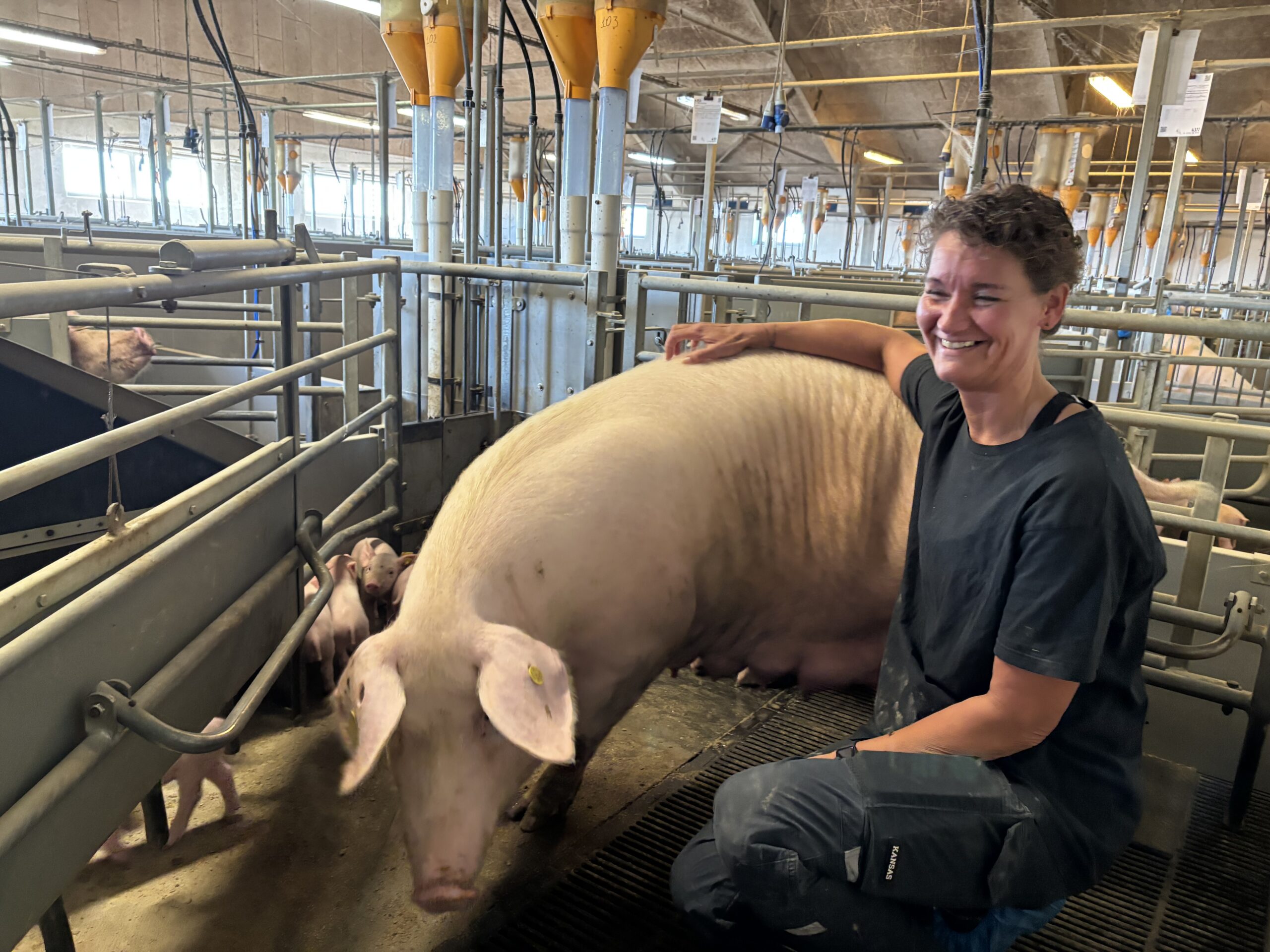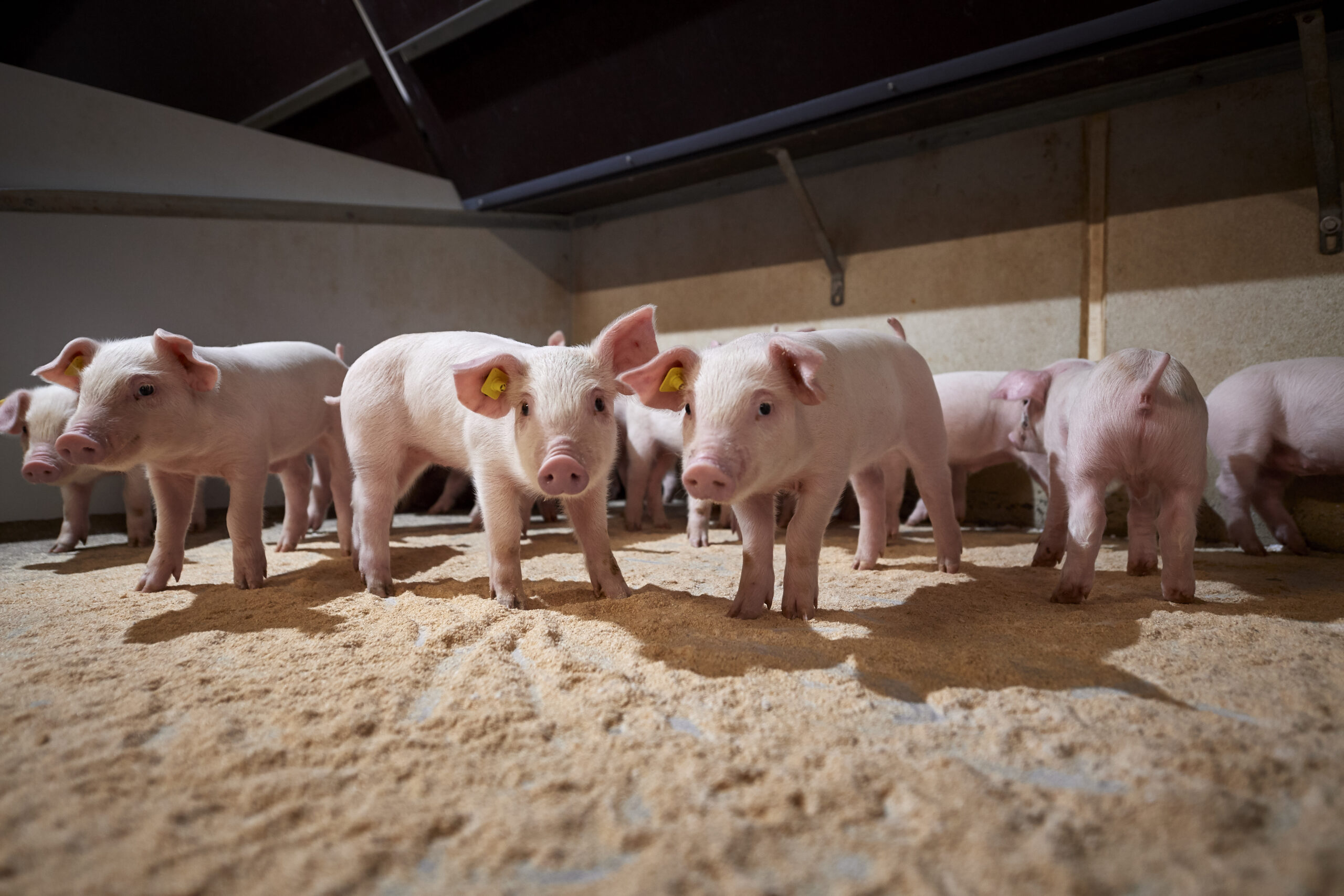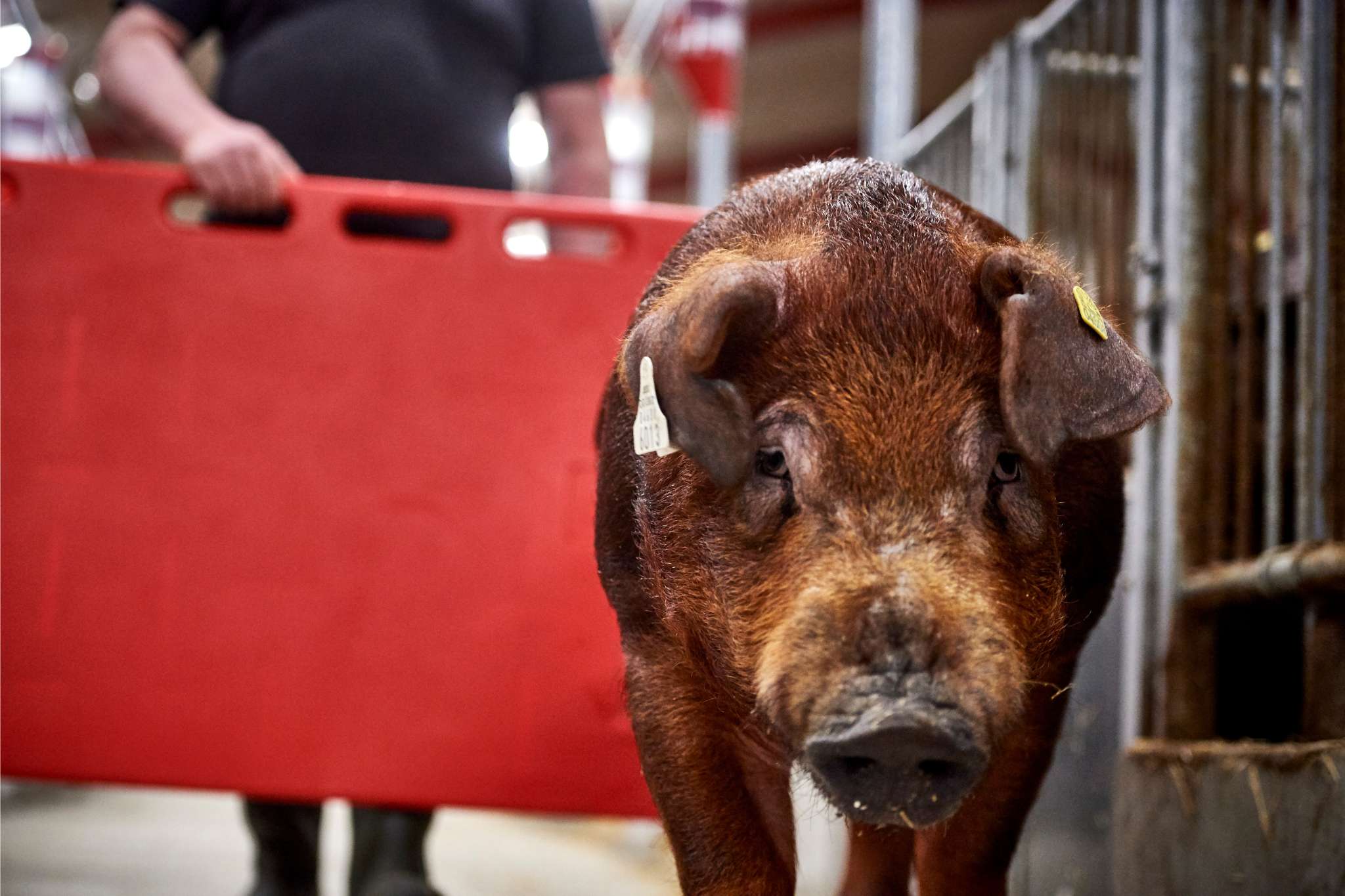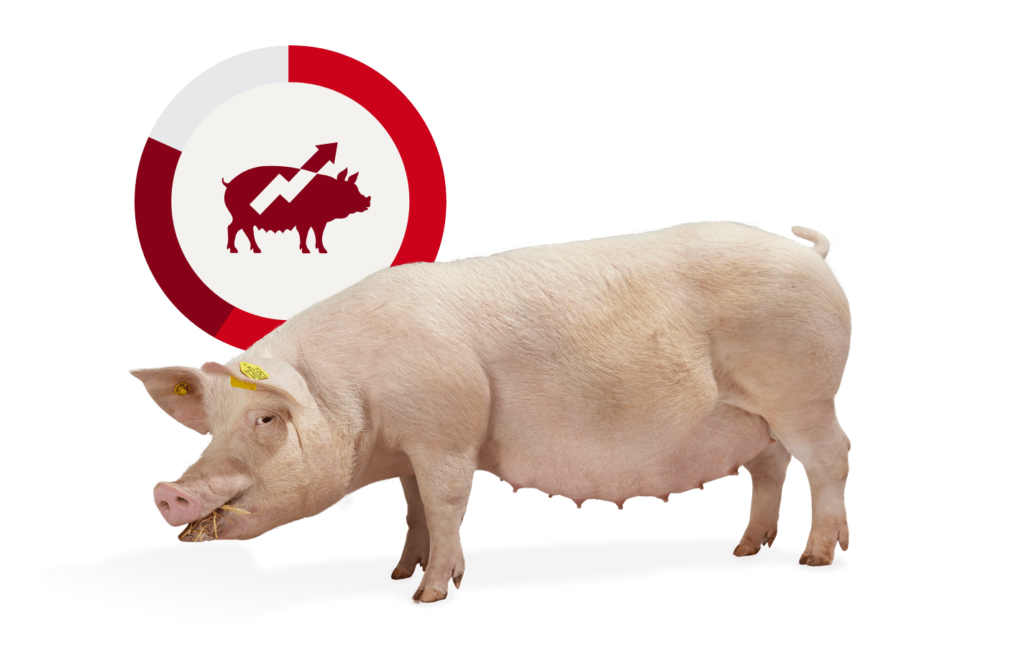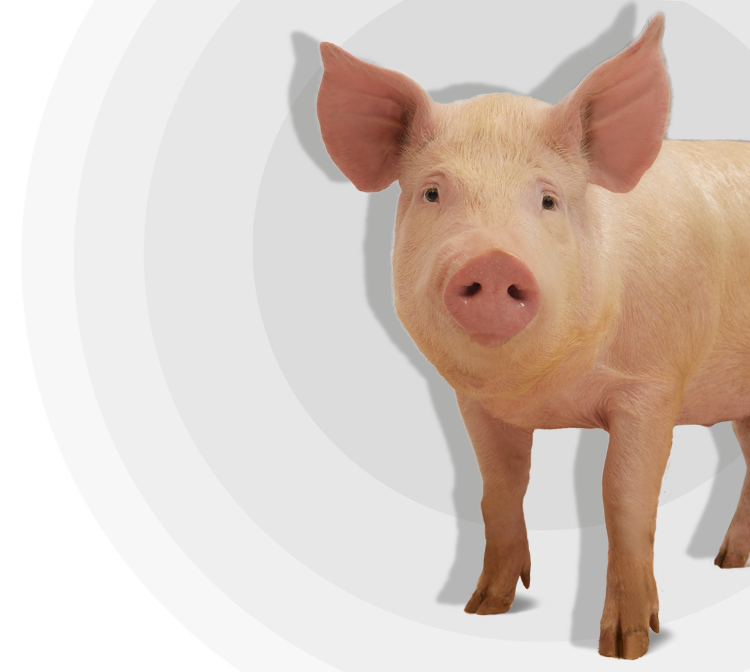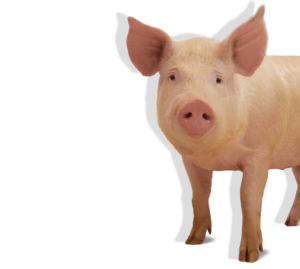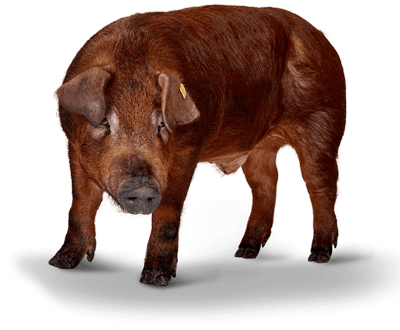DanBred’s breeding progress not only ensures a better economic result for you as a pig producer. With increasing progress, particularly in feed conversion, we also contribute to making your production more environmentally sustainable.
Economic and environmental benefits
Environmental sustainability is high on the agenda of public debate – not just among the general public at large, but also specifically within the agricultural sector. In this sector, progress is ongoing in areas such as slurry acidification, regular slurry discharge and feed conversion, and DanBred’s breeding programme plays an important role in the effort to ensure more sustainable and climate-friendly productions now and in the future.
“We are firmly focused on maximising our genetic progress for the benefit of DanBred’s customers, and, for years, we have generated genetic progress in all the traits in our breeding goals. This is not only economically beneficial for our customers, but also contributes to making our customers’ production more environmentally sustainable,” says Helle Palmø, Chief Geneticist at DanBred.
– This is not only economically beneficial for our customers, but also contributes to making our customers’ production more environmentally sustainable.
Helle Palmø
More with less
In essence, the significant breeding progress for DanBred genetics in recent years means that pig producers can produce more pigs with fewer resources. 100 % genomic selection, i.e. DNA testing of all breeding candidates, has made a significant difference to breeding progress since it was introduced gradually in 2010. Knowing all the breeding animals’ DNA (to put it in simple terms) and their relations to each other makes it easier for us to find the breeding candidates with the best genetic system for the traits that we want to develop. Consequently, DanBred can target the breeding for even better economic and environmentally beneficial traits, such as feed conversion and LP5 (live piglets on day 5/litter).
“It is precisely these traits, which are of great value to both the pig producers and the environment, that have seen significant progress in recent years. The progress in feed conversion means that less feed is needed in the production, and this naturally reduces the climate footprint significantly. At the same time, breeding progress in the LP5 trait means that DanBred sows have more pigs than before. As a result, fewer sows can now produce the same amount of finishers with less feed than earlier. In this way, everything points in the same direction,” concludes Helle Palmø.
A long-lasting commitment
DanBred’s commitment to a more sustainable pig production is not a new invention. In fact, DanBred has adopted the Code EFABAR since its birth in 2006.
The Code EFABAR (Code of good practice for farm animal breeding organizations) is a voluntary practical guideline that provides a platform to engage in responsible breeding.
By adopting the code, DanBred commits to responsible breeding with regards to key issues such as food security, economic and resource efficiency, environmental impact and animal health and welfare.

Figure 1: Production scale – effect of the DanBred breeding programme
In figure 1, the top bars show the number of sows in Denmark in 2005 and 2019, respectively, and the lower bars show the number of produced pigs per year in the same years. The reduced number of sows and the increased number of produced pigs in 2019 clearly shows the effect of the DanBred breeding programme.
Source: extracted from Statistics Denmark and statistics from Danish pig slaughterhouses


